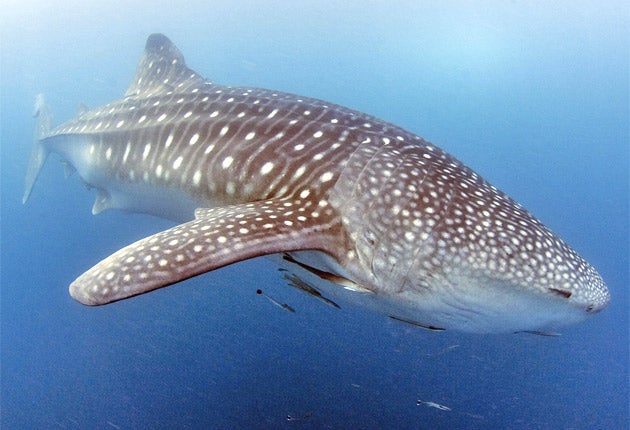Living Planet: The world is not enough
A new report reveals just how fast we are consuming the Earth's resources – and the dire consequences

Wildlife in the tropics, especially in poorer countries, is rapidly disappearing as human demands on natural resources soar beyond what the Earth can sustain, a new report reveals.
In an authoritative and ominous warning, the 2010 Living Planet Report of the World Wide Fund for Nature (WWF), the definitive survey on the state of the planet's health, signals that that tropical ecosystems are being degraded and tropical species are declining at an increasingly rapid rate, with the world's population now consuming the output of one-and-a-half sustainable Earths.
The report's Living Planet Index, which measures changes in nearly 8,000 distinct local populations of more than 2,500 animal species, shows a remarkable aggregate wildlife decline in the tropics – Central and South America, Central Africa, Asia and the Indo-Pacific region – of 60 per cent in 40 years.
The tracked populations of tropical freshwater species have fallen by nearly 70 per cent, greater than any other species' decline measured on land or in the oceans, the WWF says.
The index for the world as a whole shows a decline of 30 per cent since 1970, while the Ecological Footprint, another of the indicators used in the report, shows that human demand on natural resources has doubled since 1966, and that humans are now using the equivalent of 1.5 sustainable planets to support our activities.
If we continue with "business as usual", the report says, humanity will need the capacity of two Earths to absorb greenhouse gas emissions and keep up with natural resource consumption by 2030.
"The indicators clearly demonstrate that the unprecedented drive for wealth and wellbeing of the past 40 years is putting unsustainable pressures on our planet," said James Leape, the director-general of WWF International. "The Ecological Footprint shows a doubling of our demands on the natural world since the 1960s, while the Living Planet Index tracks a fall of 30 per cent in the health of species that are the foundation of the ecosystem services on which we all depend."
The report, published every two years, documents the changing state of biodiversity and humanity's consumption of natural resources. For the first time, the current, eighth edition looks at trends in biodiversity by countries' income – which highlights, it says, "an alarming rate of biodiversity loss in low-income countries".
The report notes: "This has serious implications for people in these countries. Although all depend on ecosystem services for their wellbeing, the impact of environmental degradation is felt most directly by the world's poorest and most vulnerable people."
It also calculates a second measure of human demand on natural resources, the Water Footprint, which shows that 71 countries are currently experiencing water stress.
But perhaps the most notable aspect of the report is its revelation of the astonishingly rapid rate of biodiversity loss in the tropics, and in poorer tropical countries in particular. This is mainly a reflection of the enormous levels of deforestation across the tropical belt in nations such as Brazil, the Democratic Republic of Congo and Indonesia – although the declines are not just due to logging, but also to land use change, development, pollution, overuse of resources and overfishing.
The report illustrates the fall in tropical wildlife numbers with species such as the leatherback turtle, down 20 per cent between 1989 and 2002 in Las Baulas national park, Costa Rica; the white-rumped vulture, down 53 per cent between 2000 and 2007 in Toawala, Pakistan; the whale shark, down 8 per cent between 1995 and 2004 on Ninaloo Reef, Australia; and the sooty albatross, down 7 per cent between 1979 and 2005 on Possession Island in the South Atlantic.
By contrast, the report records a rise of 29 per cent in the Living Planet Index for the temperate areas of the globe, such as Europe and North America, illustrating it with examples such as a rise of 13 per cent in populations of the European beaver in Poland between 1996 and 1998, a rise of 10 per cent in the Atlantic sturgeon in Albemarle Sound in the US between 1991 and 2001 and a rise of 0.6 per cent in the population of the red-breasted goose on the Black Sea coast between 1960 and 2005.
These increases may be due to greater conservation efforts and improvements in pollution and waste control. But it may also be because most of the major ecological damage, such as deforestation, had already happened in the temperate zones when the surveys began.
The biggest Ecological Footprint is found in high-income countries and is on average five times that of low-income countries – suggesting that unsustainable consumption in wealthier nations rests largely on depleting the resources of poorer, often still resource-rich tropical countries.
The countries with the biggest Ecological Footprint per person are the United Arab Emirates, Qatar, Denmark, Belgium, the US, Estonia, Canada, Australia, Kuwait and Ireland. The first two, major oil producers with low populations, reflect that a major part of the footprint is accounted for by high carbon emissions. Britain is 31st on the table.
Join our commenting forum
Join thought-provoking conversations, follow other Independent readers and see their replies
0Comments